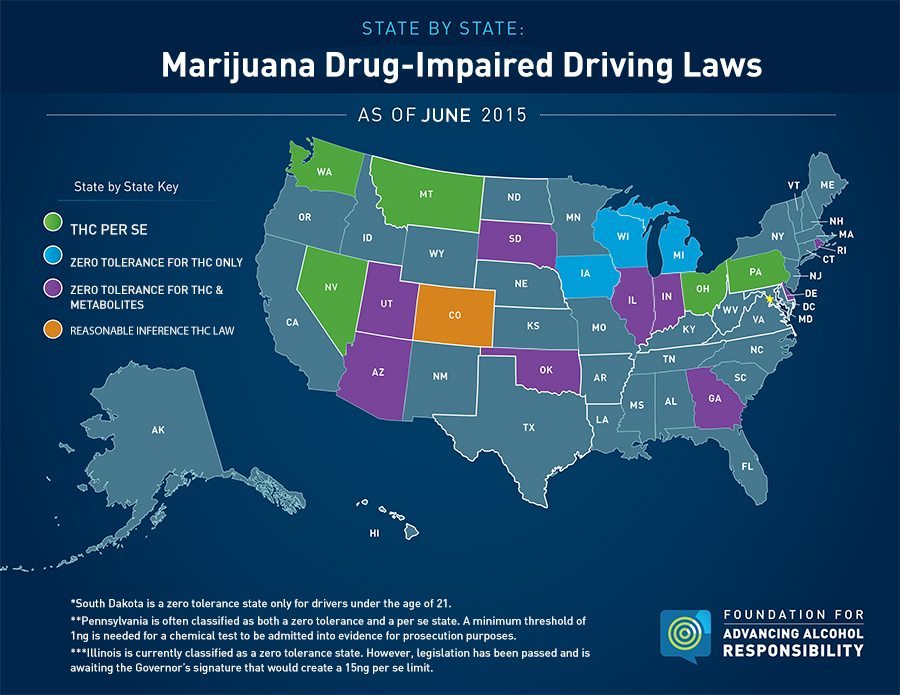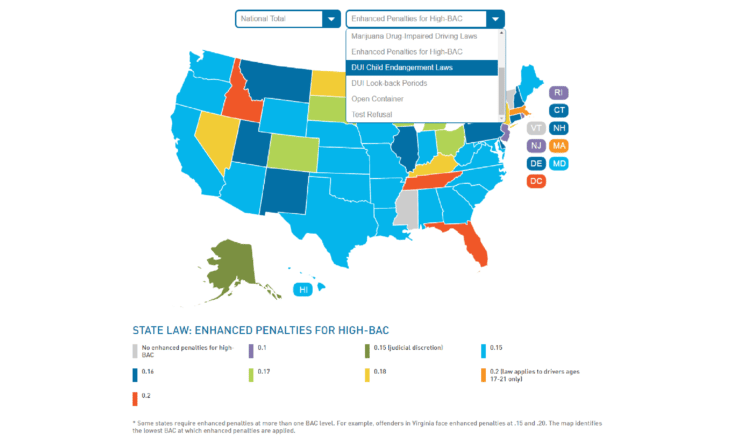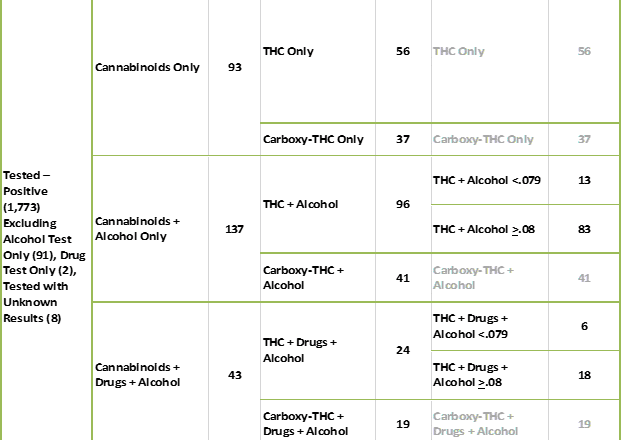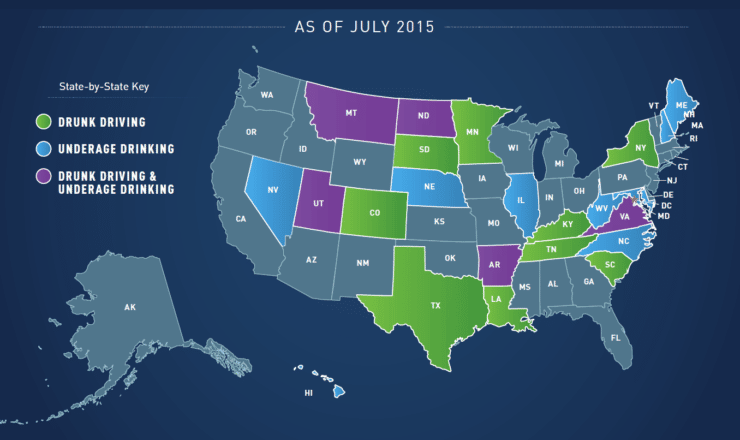Do you know the drugged driving laws in your state?
If you were to ask a person what the drunk driving laws in this country consist of, chances are they would tell you that you cannot drive with a blood alcohol content (BAC) over .08. While there is some variance in statutes, every state in the U.S. has adopted this limit as their per se threshold for drunk driving. The .08 BAC per se limit is based on more than three decades of scientific research. For drivers under the minimum legal drinking age (MDLA) of 21, every state has a zero tolerance per se law making it illegal for drivers under 21 to operate a vehicle with any alcohol in their system. By per se law, I mean the BAC level is evidence in and of itself that a driver was impaired.
Every state also allows DUI prosecution based on impairment. These laws are generally only utilized when the BAC is below the legal limit but the driver shows signs of impairment, in instances where a driver refuses to take a BAC test, or in instances where a sample is not collected. In these situations, courts rely upon behavioral evidence provided by law enforcement to demonstrate that the driver was impaired behind the wheel. Prosecution under a per se law is more straightforward as you only need to prove that the driver had a BAC above the legal limit. To garner a DUI conviction absent that number is far more challenging.
Drugged driving (DUID) laws (and subsequent prosecution) are far more complex than their DUI counterparts. There are three types of DUID laws and they are described in detail here. In a nutshell, most states have impairment-based statutes because of the lack of consensus around a drug per se limit. However, it is becoming increasingly common for states to let science fall by the wayside and instead pass DUID per se laws that assign nanogram (ng) limits to various types of drugs.
Other states have passed zero tolerance per se (ZT) laws that prohibit any drug use while driving.
Policymakers have struggled in identifying uniform policies that will effectively combat DUID. This is especially important as legislatures and voters in numerous states consider the legalization of marijuana for medicinal or recreational purposes. Unfortunately, traffic safety and DUID are often afterthoughts in the marijuana policy debate. That’s especially worrisome because the most commonly detected drug in drivers is marijuana.
Why is DUID lawmaking so challenging? There are many reasons. Here are just a few:
Science does not support a specific limit for DUID: Existing technology is limited in determining drug levels and resulting impairment. With drugs, there is no nanogram (ng) equivalent to .08. In other words, there is no agreed upon limit for which impairment can be reliably demonstrated. There has yet to be a confluence of scientific evidence that says if you have this much of a drug in your system, you are too high to drive. States that are setting per se nanogram limits (ranging from 1 to 5ng) are not basing these limits on science. It’s a political compromise. Illinois, currently a ZT state, is set to pass a 15ng per se law which will establish a threshold three times higher than anywhere else in the country. This proposed limit sets a dangerous precedent for the creation of arbitrary and science-less DUID laws.
People vary widely in how their bodies process drugs vs. alcohol: Individuals differ considerably in the rate of absorption, distribution, action, and elimination of drugs. With alcohol, there is a standard BAC curve that can be calculated. Drugs are a different story. Wide ranges of drug concentrations in different individuals can produce similar levels of impairment in experimental situations.
Presence does not equal impairment. The mere presence of a drug in a driver’s system does not necessarily mean that they are impaired. Some drugs, or their metabolites, can be detected for days or even weeks after initial consumption further complicating the issue of proving impairment. Marijuana (THC) is a good example - its metabolites can remain in the body for 30 days or longer.
New drugs are invented all the time: There is an ever expanding number of substances (synthetic and designer drugs) being manufactured that could potentially impair driving ability. Bath salts, K2, and spice have all entered the cultural lexicon but it doesn’t stop there. Ever heard of Flakka? If not, then you are not familiar with the latest in the way of designer drugs. From a policy perspective, we need to be cognizant of the continual evolution of these substances. In order to be able to encapsulate new drugs, DUID legislation cannot be overly prescriptive or be limited to current classifications.
While not a new issue, drugged driving is only now beginning to garner widespread attention. This has resulted in debate around policy and a need for more research to better understand the magnitude and characteristics of the problem as well as solutions to reduce it. The traffic safety community is working hard to provide research findings, sound policy advice, and recommendations to states. Responsibility.org is committed to this effort and advocates a common sense approach to the issue that includes better data, improved DUID laws, and DUID education/training for criminal justice professionals.
Want to learn more?
Access our summary chart to learn the specifics of marijuana-impaired driving laws in the United States or check out your state on the map.

















